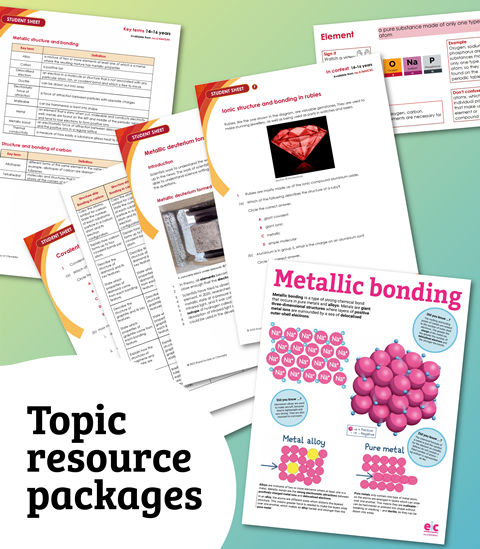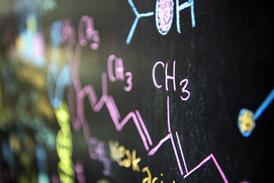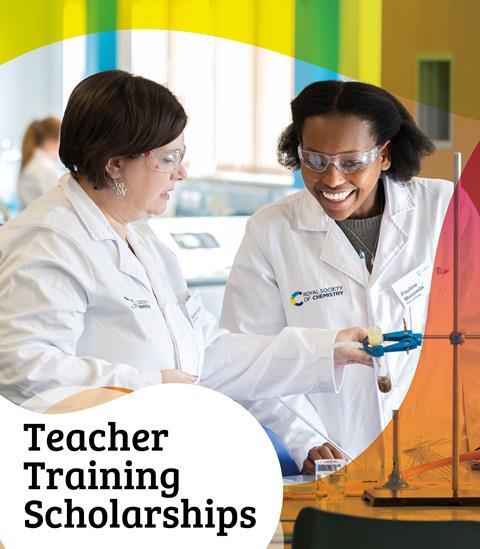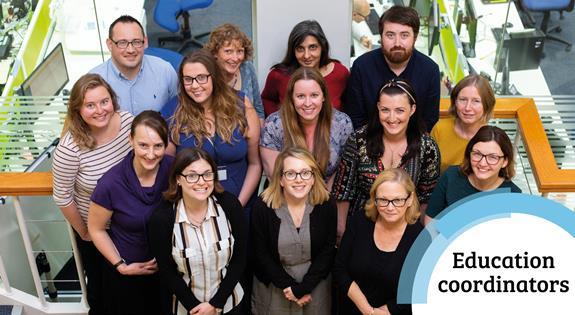All RSC Education articles in Non-EiC content
-
 Job profile
Job profilePrincipal scientist, medical devices
Dave uses his chemistry skills to help people with diabetes by making sure their blood sugar monitors work properly
-

-
 Event
EventHidden in the stars - Cecilia Payne’s stellar discovery (WCT)
Tuesday 16 September, 4–5pm BST, online.
-
 Event
EventFrom concepts to circuits: teaching post-16 electrochemistry
Tuesday 2 December, 4–5pm GMT, online
-
 Misconceptions
MisconceptionsChemical misconceptions II: Spot the bonding | 14–16 years
Use this set of diagrams where learners must identify what types of bonding are represented to develop understanding and tackle misconceptions
-
 Lesson plan
Lesson planRecording data and uncertainty | Fundamentals of chemistry | 16–18 years
Revise understanding of volume and measurements before moving on to practice taking measurements and considering uncertainty with this preparation worksheet and student sheet
-
 Lesson plan
Lesson planLight and electrons in energy levels | Fundamentals of chemistry | 16–18 years
Use this flipped learning worksheet and student sheet to revise atomic models and then move on to electromagnetic radiation
-
 Lesson plan
Lesson planModelling radioactive decay | Fundamentals of chemistry | 16–18 years
Use this flipped learning worksheet and student sheet to revise fusion and nuclear equations and introduce decay
-
 Lesson plan
Lesson planNuclear fusion | Fundamentals of chemistry | 16–18 years
Use this flipped learning worksheet and student sheet to revise subatomic particles and introduce nuclear fusion
-
 Lesson plan
Lesson planFundamentals of chemistry | 16–18 years
Tackle the key concepts of scale and representation from the start of your post-16 chemistry course with this short course designed around flipped learning workbook
-
 Lesson plan
Lesson planCounting protons, neutrons and electrons | Fundamentals of chemistry | 16–18 years
Use this flipped learning worksheet and student sheet to revise and develop understanding of subatomic particles
-
 Lesson plan
Lesson planDeveloping a model of the atom | Fundamentals of chemistry | 16–18 years
Use this flipped learning worksheet and student sheet to revise and develop understanding of atomic structure and how it is represented in chemistry
-
 RSC News
RSC NewsIntroducing a new way to find RSC teaching resources
Everything you need to teach key chemistry topics, organised by purpose, to save you time and transform your lessons
-
 Web page
Web pageJohnstone’s triangle resources
Develop learners’ understanding of key topics using these activities and resources based on Johnstone’s triangle model
-
 RSC News
RSC NewsBESA shortlists RSC practical videos and resources for award
The British Educational Suppliers Association (BESA) recognised our core practical videos and resources in their Outstanding curriculum and assessment resource – secondary award category
-
 Resource
ResourceChemical misconceptions II: Spot the bonding | 16–18 years
This activity explores learners knowledge of different bonding types through 18 diagrams
-
 Resource
ResourceBonding models | Stretch and challenge | 14–16 years
Challenge learners to explore alternative models, using plasticine and cocktail sticks
-
 Class experiment
Class experimentMelting and freezing stearic acid
In this class practical students take the temperature of stearic acid at regular intervals as they heat and cool it. Includes kit list and safety instructions.
-
 Course
CourseEffective pedagogy
Learn about the core ideas and strategies that are required for effective learning to take place in this on-demand, online course
-
 Event
EventKey points to take away from the 2025 chemistry exams (GCSE and National 5)
Monday 3 November, 4–5pm GMT, online











